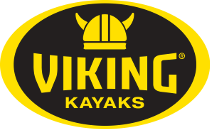Mothershipping, isn’t that cheating?
4:23PM 31st Jan 14
For many of us there’s something exciting about paddling and fishing new areas and far off locations. Some of these spots have an almost mythical status from the epic and historic stories we’ve grown up with, and it’s often a real adventure heading there in person. In the previous article I had an opportunity to talk about one of these after Milkey and I grabbed our kayaks and headed into the Far North. I had long heard of the white sands and dark kelp lines of Great Exhibition Bay and wanted to get a taste of them for myself.
This time I’m continuing the exploration theme, but instead of launching from a remote beach to find new ground, we’re clambering aboard a mothership. The goal: target a couple of areas that have always seemed tantalizingly close but were just too far for safe paddling - outside the Mercury Islands and circumnavigating Cuvier Island. These are spots that have taunted me from pages of magazines and books, and when standing on the Coromandel Peninsula peering across the waves to the islands beyond.
The clincher for getting off my butt and finally ticking these destinations off my kayaking bucket list was having trip organizer Bryce get in touch, “you wouldn’t be interested in a three day mothership trip to Cuvier would you…?” Thus began the scramble to assemble equipment, service tackle, and find all my photographic kit.
Having Cuvier Island as a backdrop meant it didn’t matter how big the fish were, the adventure was having the opportunity to kayak fish more remote waters – that said, four personal best results were smashed!
For those who’ve never experienced using bigger boats to transport kayaks to remote locations the exercise can appear a little daunting. Top considerations tend to revolve around how the kayaks will be transported, and the difficulty of transferring to and from the kayak. Equipment and tackle logistics can also appear complex given the amount of kit everyone likes to carry. The reality is that while some planning is required and it’s highly desirable to be completely confident on your kayak, even those relatively new to paddle sport can have a totally awesome experience.
Let’s use this trip to the Merc’s and Cuvier to have a closer look at “mothershipping” as this is an aspect of kayak fishing and paddle sports that has huge potential to grow over the next few years.
Why mothership?
This is the first and most obvious question, and the obvious answers don’t necessarily tell the whole story. In the case of this trip to Cuvier Island the obvious reason for using a mothership is that it’s too far for almost all paddlers using sit-on-top fishing kayaks. To do the trip safely a paddler would need to overnight at the island and this isn’t normally possible. Cuvier Island is a predator free Nature Reserve and landings are strictly controlled by DOC permit.
Bryce with his PB snapper from the deeper pins. This time dropping a Jitterbug instead of a jig delivered a beauty snapper instead of a kingfish.
Another obvious reason for using a mothership for kayak excursions is to increase your fishing time in productive areas. Using a faster craft for access cuts traveling times to place you directly in the areas you want to kayak fish. This means all the time normally taken paddling out and back is now given over to the fun bit of actually fishing. Yes, the odd old-school paddler may see this as “cheating”. Yes, there are a few like myself who like the challenges of big paddles where possible and practical, but with the lifestyles most of us lead there’s huge merit in being able to get there quickly and maximize our fishing time.
A more subtle benefit of using a mothership for these trips is the knowledge and expertise brought by the skipper of the bigger boat. For this trip to the Merc’s and Cuvier we had Pete McKenzie and his 52’ charter vessel Te Wairoa as the mothership. Pete did far more than simply transport us around, his advice put us on fishing grounds that made a huge difference to our success (listening to VHF radio calls and trip reports to Barrier Radio proved just how hard the fishing was yet we did well with a number of new personal best’s set).
In addition to this and plying us with enough culinary delights to have the kayaks sitting even lower on the water, Pete’s knowledge of the history and wildlife of the area meant the trip really came alive. Most charter skippers I’ve worked with over the years add immensely to a trip with lots of local history, interesting anecdotes, and certainly plenty of fishy stories of battles won, fish released, and epic losses. All of this adds to the atmosphere and adventure of the expedition.
Andrew being stretched on heavy gear by a mystery fish that dragged him round for 10 minutes before the aramid cord parted from the 200g slow jig
Of course there’s one aspect of going on a mothership trip that can’t be underestimated: it’s easy! No hours of grinding away with the paddle as you slog into heavy headwinds and a choppy sea getting there or heading home. Big fish boated and kept can be transferred straight onto ice aboard the bigger boat so you’re not left sitting low on the water. Moving to the next fishing spot is faster, and in the case of deep water fishing you have the powerful electronics aboard the mothership to find the fish and put you on the spot. This all combines to allow paddlers of all fitness levels to comfortably access some of the best remote fishing this country has to offer.
Making life simpler
Kayaking from a mothership does require being a little more organized. With multiple kayaks, each a self-contained “boat” in its own right, there’s a need to sort all your paddling and fishing gear for smooth transitions on and off the water. Here’s a quick guide covering the points I’ve found most important:
Brad enjoying the perfect conditions of the last day and showing off one of the trips numerous rat kings. We couldn’t find their big hoodlum brothers but these willing battlers were huge fun.
Take your tie-downs and foam cradles with you – aboard most motherships there’s generally a scramble for space to secure your precious kayak, and definitely a need to protect the larger boat’s paintwork. The foam roof rack cradles many of us use make excellent cushioning and packing material as kayaks are stacked on fore decks, cabin tops, and along side rails. The tie-down straps can then be used to secure the kayaks if conditions are less than ideal. Aboard Te Wairoa Pete provides basic kayak cradles attached to the cabin top making this process easier, but having foam cradles and tie-downs is still useful.
Being organized makes transitions to and from the kayaks a straight forward process. Having all your electronics and gear in a self-contained Tackle Pod greatly simplifies this, and helps ensure the kayak itself is as light as possible for lifting on and off the deck.
Two 5m lengths of soft 6mm rope – these are primarily used as lifting ropes to get your kayak on and off the water. Making them this long means they can be looped through the handles at either end of the kayak without knots. To raise or lower the kayak, simply pass one end of the rope through a handle and hang on to both rope ends together. The doubled rope is easy to grasp, and when it’s time to release the kayak dropping one end (not both!) will let the rope slide clear. These rope can serve additional roles when towing kayaks between spots and to help secure kayaks and equipment on deck.
Put your paddling gear in one fish bin or dive bag – with several kayaks on deck, space can be at a premium, especially when trying to kit up before launching. Depending on your skipper’s preference keep all your paddling gear to just one fish bin or dive bag. This keeps all you need in one spot and minimizes the amount of scrambling around if conditions are choppy. For most it’s a good idea to leave the kayaks partially rigged: seats, fish covers/bags/Chill-Pod’s, drift chutes, etc. can be left fitted so kitting up for launching is fast and easy.
Take rods and reels that multi-task – Kayakers tend to carry far more fishing tackle than the usual charter trip. Before heading away make a decision on what will be your primary target for the trip and tackle up a specific rod and reel for that. Then for remaining tackle try and choose gear that multitasks and can be used for a variety of purposes. If rods and reels can be mixed and matched even better: I generally carry spare reels amongst my clothing to go onto rods if I’ve been spooled or have had a mechanical failure. This has kept me and occasionally others fishing after an incident without needing a forest of rods.
Heading for home with kayaks in tow; using a mothership to access our offshore islands means we no longer have to stand on the mainland dreaming of possibilities showing on the far horizon.
Containerize your “on-board” fishing tackle – with most fishing kayaks now having some sort of in-built tackle storage it’s worthwhile making sure you use easily transferred tackle boxes or bags. It’s important to avoid the need to hand across loose items when launching or retrieving from the mothership as this slows the process, especially in choppy conditions. This is an area where the Tackle Pod™ system excels since it contains all your tackle and has your sounder and other accessories mounted on top. If necessary load your tackle aboard your kayak before you launch, but be aware this can make it heavy to lift over the side and there’s a greater risk of loss if the kayak rolls before you’re aboard.
Try and limit your extra tackle – OK, I’m aiming this one at myself, but also any others like me who want to carry a whole tackle shop with them. There’s nothing like the security of knowing you have every possible fishing contingency covered, but as kayakers we already have a lot of extra gear to stow. Try and be realistic about what fishing tackle you might need, and consider coordinating as a group so there’s no doubling up. Especially on multi-day trips this can help minimize carrying too much gear and makes it a fun exercise each evening in a group tackle session re-rigging for the following day.
Nathan dwarfed by cliffs at the Mercury Islands – dramatic landforms, eerie native birdsong, and great fishing, who could ask for more from a charter trip.
Take enough batteries – One factor needing careful consideration as more of us use higher spec electronics and compact video cameras: make sure you carry enough battery capacity. This could mean having a single bigger battery, or ensuring you have enough batteries for two days of normal use. This allows you to use your second battery while the first is being charge aboard the mothership. Be sure to discuss total charging needs amongst the crew and with the charter skipper long before the trip so everyone is aware of what’s required.





